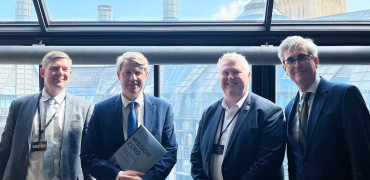Carbon reduction is now a major driver of corporate policymaking.
Global businesses and brands are stepping up with environmental goals, putting ‘carbon’ at the top of the agenda.
With this comes an ever-growing wave of new corporate terminology: embodied carbon, Net Zero, Scopes 1, 2 and 3, offsetting and more.
It’s becoming increasingly important to understand what these terms mean because it’s crucial to understand exactly what clients are aiming for.
One example of this is the use of the terms ‘carbon neutral’ and ‘Net Zero’. While they look similar, there are important differences.
When it comes to carbon neutral and net zero, it’s not really a case of which is ‘better’.
What is carbon neutral?
The Carbon Trust explains that ‘carbon neutral’ is defined by the PAS 2060 standard from BSI which sets out requirements for measurement, reduction and offsetting.
BSI describes carbon neutrality as: “Not adding new greenhouse gas (GHG) emissions to the atmosphere. Where emissions continue, they must be offset by absorbing an equivalent amount from the atmosphere.”
It’s important to note that ‘carbon neutral’ can refer to a defined part of a business such as a specific product or service, rather than the whole organisation.
This means that carbon neutrality does not have to include the whole organisation or its supply chains.
Defining net zero
The term ‘net zero’ is more rigidly defined in terms of what it includes.
An organisation aiming to be truly net zero must include all direct and indirect greenhouse gas emissions. This means that it must reduce its absolute emissions across every part of its business, including supply chains.
The Science Based Targets Initiative (SBTi) provides the framework for organisations to implement a net zero target.
This supports the Paris Agreement to limit global temperature rise to 1.5oC. As an example, Mitsubishi Electric’s Environmental Sustainability Vision 2050 sets its net zero 2050 target in line with the SBTi.
The company has also gone further and earlier this year, announced that it would make all offices and manufacturing sites net zero by 2030.
Which is better?
When it comes to carbon neutral and net zero, it’s not really a case of which is ‘better’.
Both goals set out to reduce emissions, and both require businesses to understand and measure their emissions to tackle them.
This focus on the nitty-gritty of GHG emissions includes the built environment.
A building (whether owned or leased) can be an important reflection of an organisation’s commitment to sustainability. We are therefore seeing developers, owners and tenants focus on the environmental aspects of their buildings.
Legal definitions
So the next question might be, ‘What is a net zero building?’
And it’s one that’s harder to answer than you might think.
At the moment, there is no legal definition of net zero for buildings. While Part of the Building Regulations does address emissions, it makes no reference to what ‘net zero’ might look like.
Several organisations, including CIBSE, RICS, RIBA and LETI are working to address this issue. Their definition of a net zero carbon (whole life) built asset is: “One where the sum total of all its asset related greenhouse gas emissions, both operational and embodied, over an asset’s life cycle are minimised, meet local carbon, energy and water targets and with residual ‘offsets’, equals zero.”
Different types of carbon
This also leads to questions about the definitions of ‘operational’ and ‘embodied’ carbon.
Operational carbon emissions are produced from the generation of electricity used in a building, and from any on-site fossil fuels (e.g. gas or oil boilers).
Embodied carbon covers the emissions created in the construction of the building and in the manufacturing, transportation and installation of any materials and products in it.
Carbon considerations are certainly making product and system specification more challenging. For example, a product with low embodied carbon might have high operational carbon emissions – and vice versa. A lot depends on the client’s objectives and priorities.
Mitsubishi Electric has established a specialist Zero Carbon Design Team to help our customers tackle questions like this, and to help them deliver low-carbon buildings.
We can provide advice from the design stage and ensure that you’re specifying the right equipment for your needs.
Dave Archer Business Manager - Influenced Sales




